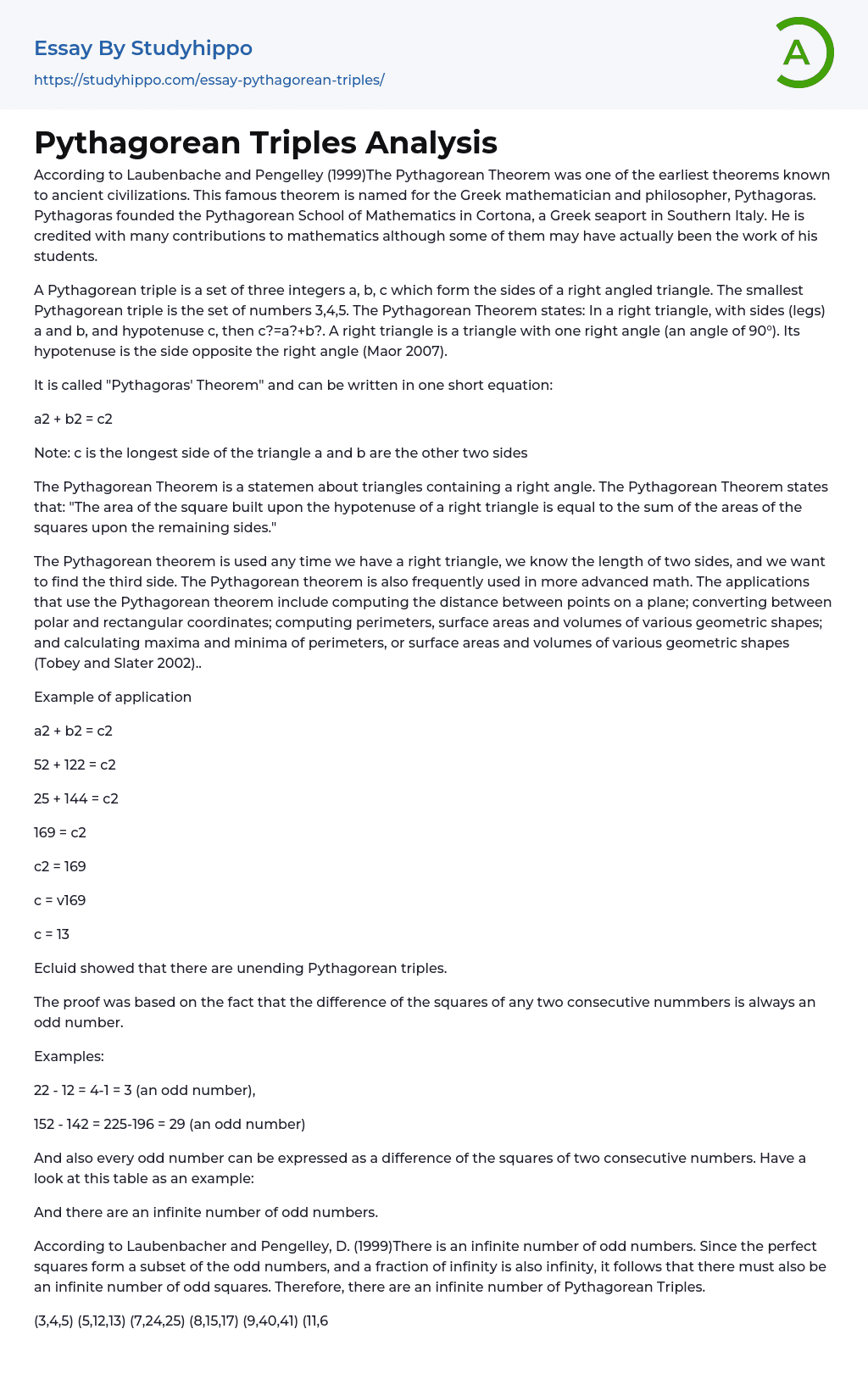The Pythagorean Theorem was one of the earliest theorems known to ancient civilizations. This famous theorem is named for the Greek mathematician and philosopher, Pythagoras. Pythagoras founded the Pythagorean School of Mathematics in Cortona, a Greek seaport in Southern Italy. He is credited with many contributions to mathematics although some of them may have actually been the work of his students.
A Pythagorean triple is a set of three integers a, b, c which forms the sides of a right angled triangle. The smallest Pythagorean triple is the set of numbers 3,4,5. The Pythagorean Theorem states: In a right triangle, with sides (legs) a and b, and hypotenuse c, then c²=a²+b². A right triangle is a triangle with one right angle (an angle of 90°). Its hypotenuse is the side opposite the right angle.
It is called "Pythagor
...as' Theorem" and can be written in one short equation:
a2 + b2 = c2
Note: c is the longest side of the triangle a and b are the other two sides
The Pythagorean Theorem is a statement about triangles containing a right angle. The Pythagorean Theorem states: "The area of the square built upon the hypotenuse of a right triangle is equal to the sum of the areas of the squares upon the remaining sides."
The Pythagorean theorem is used any time we have a right triangle, we know the length of two sides, and we want to find the third side. The Pythagorean theorem is also frequently used in more advanced math. The applications that use the Pythagorean theorem include computing the distance between points on a plane; converting between polar and rectangular coordinates; computing perimeters, surface areas and volumes of variou
geometric shapes; and calculating maxima and minima of perimeters, or surface areas and volumes of various geometric shapes.
Example of application
a2 + b2 = c2
52 + 122 = c2
25 + 144 = c2
169 = c2
c2 = 169
c = v169
c = 13
Ecluid showed that there are unending Pythagorean triples.
The proof was based on the fact that the difference of the squares of any two consecutive numbers is always an odd number.
Examples:
22 - 12 = 4-1 = 3 (an odd number),
152 - 142 = 225-196 = 29 (an odd number)
And also every odd number can be expressed as a difference of the squares of two consecutive numbers. Have a look at this table as an example:
And there are an infinite number of odd numbers.
According to Laubenbacher and Pengelley, D. (1999)There is an infinite number of odd numbers. Since the perfect squares form a subset of the odd numbers, and a fraction of infinity is also infinity, it follows that there must also be an infinite number of odd squares. Therefore, there are an infinite number of Pythagorean Triples.
(3,4,5) (5,12,13) (7,24,25) (8,15,17) (9,40,41) (11,60,61) (12,35,37) (13,84,85) (15,112,113) (16,63,65) (17,144,145) (19,180,181) (20,21,29) (20,99,101) (21,220,221) (23,264,265) (24,143,145) (25,312,313) (27,364,365) (28,45,53) (28,195,197) (29,420,421) (31,480,481) (32,255,257) (33,56,65) (33,544,545) (35,612,613) (36,77,85) (36,323,325) (37,684,685)
One of the most common applications of the Pythagorean theorem is in the distance formula, to find the distance between two points.




